I tried the Slow Carb Diet for 30 days… Here’s what happened.
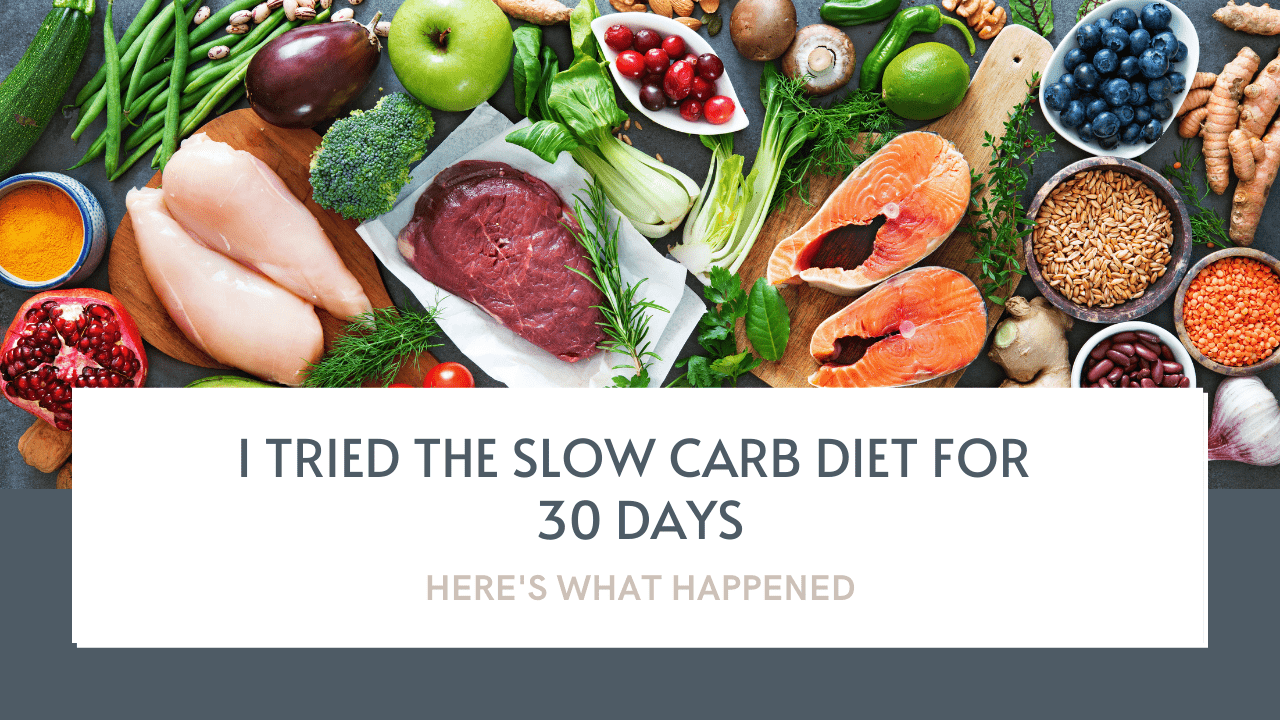
Biohacking has always been something I was interested in, so when I heard about Tim Ferris’s book, “The 4-Hour Body“, I was intrigued. After reading it and realizing how much of his approach was close to the way I was eating, I decided to give it a try for a month to see what would happen.
There are a few reasons why I like to experiment with different diets and nutritional hacks. The first is I don’t believe anyone can judge a specific diet or way of eating if they have never tried it themselves. I have been following a Keto diet for almost four years now, and if I had a nickel for every time someone told me Keto was “unhealthy” when they have never tried the diet, I would be on the beach right now, sipping a margarita instead of writing this post right now.
Secondly, I believe that it’s good to give our bodies a “shock” in a while. Our bodies can sometimes become lazy when we are doing the same thing for a while, and that is why we lose weight so much when we first try a new diet, but then it slows down or we “stall.” Shocking the body with something different wakes it up and reboots it away.
Third, I don’t believe that Keto is the end-all-be-all. I love Keto, and I built a business around it. However, I don’t think that there is such a thing as the “ideal diet” or way of eating. As humans, we are so different, and what may work for one person doesn’t work for another. Keto has worked for me tremendously (I’ve lost a total of 110 lbs combined); however, that doesn’t mean that there isn’t something else that is better out there.
The point is; that you never know until you try, so don’t judge a diet or way of eating until you’ve tried it yourself.
Now that I got that out of the way let me tell you about what the Slow Carb Diet is.
Download your carb cycling cheat sheet here
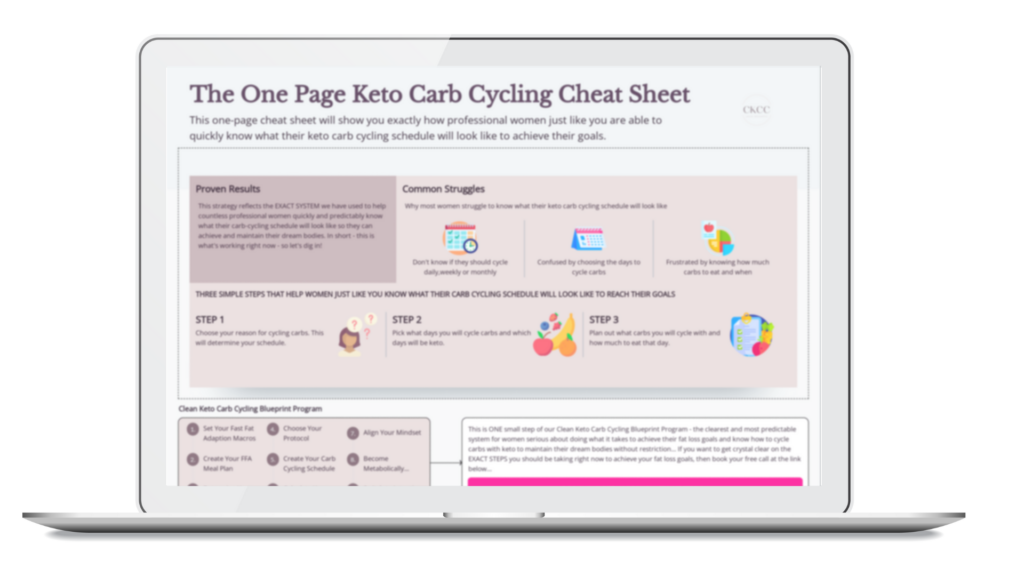
What is the Slow Carb Diet?
In a world where diet trends come and go, the Slow Carb Diet has managed to stay relevant and continue growing in popularity. But what exactly is this diet, and how can it help you achieve your health and weight loss goals? In this blog post, we will explore the Slow Carb Diet, its principles, benefits, and some tips to help you get started.
Understanding the Slow Carb Diet
The Slow Carb Diet was popularized by Tim Ferriss in his bestselling book, “The 4-Hour Body.” The main premise of this diet is to consume carbohydrates with a low glycemic index (GI) – which are referred to as “slow carbs” – in order to maintain steady blood sugar levels and promote fat loss. Low GI foods are digested and absorbed more slowly by the body, resulting in a more gradual release of glucose into the bloodstream.
The 5 Basic Principles
- Avoid “white” carbohydrates: The first rule of the Slow Carb Diet is to avoid any carbohydrates that are white or can be white. This includes bread, rice, pasta, potatoes, and sugar. These foods have a high glycemic index, which can cause rapid spikes in blood sugar levels and contribute to weight gain.
- Eat the same few meals repeatedly: Ferriss suggests eating the same meals over and over to make meal planning and preparation simpler. This involves consuming a mix of protein, legumes, and vegetables.
- Don’t drink calories: On the Slow Carb Diet, it’s essential to avoid beverages that contain calories, such as soda, fruit juice, and alcohol. Instead, focus on drinking water, black coffee, or unsweetened tea.
- Don’t eat fruit: Fruit is generally discouraged on this diet due to its sugar content. However, small portions of low-sugar fruits, like berries, may be allowed in moderation.
- Take one day off per week: The Slow Carb Diet allows for a “cheat day” once a week, where you can eat anything you desire. This is intended to help with diet adherence and prevent feelings of deprivation.
What Foods Should I Avoid on the Slow Carb Diet?
When following the Slow Carb Diet, you should avoid the following types of foods:
- Refined carbohydrates: White bread, white rice, pasta, pastries, and other processed grain products are off-limits due to their high glycemic index and impact on blood sugar levels.
- Sugary foods and drinks: Soda, fruit juices, candy, and desserts containing added sugars should be avoided. Natural sugars found in fruits are also limited, though small amounts of low-glycemic index fruits (like berries) are allowed in moderation.
- Starchy vegetables: Potatoes, sweet potatoes, corn, and other starchy vegetables are not recommended on the Slow Carb Diet.
- Legumes with high glycemic index: While most legumes are allowed, those with a high glycemic index like yellow peas and broad beans should be avoided.
- Dairy products: Milk, yogurt, cheese, and other dairy products are generally excluded from the Slow Carb Diet, with the exception of cottage cheese in moderation.
- Processed foods: Avoid foods high in preservatives, artificial ingredients, and unhealthy fats.
- Alcohol: Alcohol consumption is discouraged on the Slow Carb Diet, with the exception of an occasional glass of red wine.
Benefits of the Slow Carb Diet
- Weight loss: The Slow Carb Diet can help with weight loss by promoting the consumption of nutrient-dense, low-GI foods that keep you feeling full and satisfied. By avoiding high-GI foods, you can prevent blood sugar spikes and crashes, which can help curb cravings and overeating.
- Improved blood sugar control: Consuming low-GI carbohydrates can help improve blood sugar control in individuals with diabetes or prediabetes.
- Simplicity: The Slow Carb Diet is relatively easy to follow, as it doesn’t involve complicated meal plans or counting calories.
Do I really have to have one cheat day a week on the slow-carb diet?
One aspect of the Slow Carb Diet that intrigues many is the idea of a “cheat day” – a day when you can indulge in your favorite restricted foods without feeling guilty.
But is this cheat day an essential component of the Slow Carb Diet, or can you still reap the benefits without it? Let’s explore this question and the science behind the cheat day concept.
The Role of Cheat Days in the Slow-Carb Diet
A cheat day on the Slow Carb Diet allows you to indulge in foods that are normally off-limits, like refined carbohydrates, sugary treats, starchy vegetables, and dairy products. The idea behind incorporating a cheat day is twofold:
- Psychological Benefits: A scheduled cheat day can help prevent feelings of deprivation, making it easier to stick to the diet in the long run. By allowing yourself to enjoy your favorite foods once a week, you’re less likely to feel restricted and more likely to stay committed to the diet plan.
- Metabolic Benefits: Tim Ferriss suggests that a weekly cheat day can help “reset” your metabolism by temporarily increasing your caloric intake. This spike in calories can theoretically prevent your body from adapting to a lower calorie intake, thus avoiding a potential plateau in your weight loss journey.
Is a Cheat Day Necessary for Success?
While the idea of a cheat day may be appealing, it’s not a one-size-fits-all solution.
The necessity of a cheat day on the Slow Carb Diet ultimately depends on your individual preferences, goals, and how your body responds to the diet.
For some people, a cheat day provides the psychological break they need to stay committed to the diet.
Others may find that a cheat day leads to overindulgence and difficulty getting back on track.
If you’re concerned about maintaining control on your cheat day, consider implementing a “cheat meal” or a “mindful indulgence” approach instead, where you allow yourself a specific treat without going overboard.
Additionally, the metabolic benefits of a cheat day are still a topic of debate among experts.
Some studies suggest that occasional overfeeding can indeed boost metabolism and fat loss, while others argue that the benefits are minimal or even counterproductive.
It’s important to listen to your body and consider your personal progress when deciding whether to incorporate a cheat day into your Slow Carb Diet.
Getting Started with the Slow Carb Diet
If you’re considering trying the Slow Carb Diet, here are a few tips to help you get started:
- Plan your meals: Prepare a list of meals that include a source of protein, legumes, and vegetables, and rotate through them throughout the week.
- Stock your pantry: Fill your pantry with slow carb-friendly foods, such as lentils, beans, chickpeas, and a variety of non-starchy vegetables.
- Cook at home: Prepare your meals at home to ensure you have control over the ingredients and can avoid hidden sugars and unhealthy fats.
- Monitor your progress: Keep track of your weight, energy levels, and overall health to assess the effectiveness of the Slow Carb Diet for you.
Keto VS. Slow Carb Diet
In the quest for optimal health and weight loss, the Slow Carb Diet and the Ketogenic Diet (Keto) have emerged as popular contenders.
While both diets emphasize the reduction of carbohydrate intake, they differ significantly in their principles, food choices, and intended outcomes.
The Slow Carb Diet: A Quick Recap
The Slow Carb Diet, popularized by Tim Ferriss in his book “The 4-Hour Body,” focuses on consuming low glycemic index (GI) carbohydrates to maintain steady blood sugar levels and promote weight loss.
The diet emphasizes the consumption of legumes, vegetables, and protein while avoiding high-GI carbohydrates, fruits, and calorie-containing beverages. One unique aspect of the Slow Carb Diet is the allowance for a weekly “cheat day.”
The Ketogenic Diet: A Brief Overview
The Ketogenic Diet is a high-fat, moderate-protein, and very low-carbohydrate diet that aims to shift the body’s metabolism from burning glucose for energy to burning fat through a process called ketosis.
By drastically limiting carbohydrate intake (usually to around 20-50 grams per day), the Keto diet forces the body to rely on ketones, which are produced from stored fat, as its primary fuel source.
The diet emphasizes the consumption of healthy fats, adequate protein, and non-starchy vegetables, while significantly restricting carbohydrate intake.
Key Differences Between Slow Carb and Keto
- Carbohydrate Intake: The most significant difference between the Slow Carb Diet and Keto lies in the amount and type of carbohydrates consumed. While both diets encourage the reduction of carbohydrate intake, the Slow Carb Diet allows for the consumption of low-GI carbs, including legumes. In contrast, the Keto diet drastically restricts all forms of carbohydrates, often limiting intake to 20-50 grams per day to achieve and maintain ketosis.
- Macronutrient Ratios: The Slow Carb Diet does not have strict macronutrient ratios, and its primary focus is on consuming low-GI carbs alongside protein and vegetables. The Keto diet, however, places a strong emphasis on consuming high amounts of fat (approximately 70-80% of daily calories), moderate amounts of protein (20-25%), and very low amounts of carbohydrates (5-10%).
- Ketosis: The primary goal of the Keto diet is to achieve a state of ketosis, where the body burns fat for fuel instead of glucose. The Slow Carb Diet, on the other hand, does not aim for ketosis, and its focus is on maintaining steady blood sugar levels by consuming low-GI carbs.
- Food Choices: While both diets restrict high-GI carbohydrates, the Keto diet is more restrictive when it comes to food choices. Legumes, which are a staple in the Slow Carb Diet, are typically off-limits on Keto due to their carb content. Similarly, fruit consumption is limited on Keto, while small portions of low-sugar fruits may be allowed in moderation on the Slow Carb Diet.
- Cheat Days: The Slow Carb Diet incorporates a weekly “cheat day,” allowing individuals to indulge in any food they desire. This can help with long-term adherence to the diet and prevent feelings of deprivation. The Keto diet, however, does not typically include cheat days, as they can disrupt ketosis and hinder progress.
Here are the similarities:
- Focuses on eating real, whole foods
- No refined carbs
- No sugar
- No dairy (Clean Keto)
- No starchy vegetables
Here are the differences:
- Beans and Lentils are not higher carbs and don’t support Nutritional Ketosis.
- Dairy and Fruit are allowed on Keto (not on the Slow Carb Diet)
- Cheat days on Keto are not encouraged.
What does eating on the Slow Carb Diet look like?
A Slow Carb Diet is a dietary approach that focuses on consuming low glycemic index (GI) carbohydrates, lean proteins, healthy fats, and non-starchy vegetables.
The goal is to minimize blood sugar and insulin spikes, promote fat loss, and maintain consistent energy levels throughout the day.
Here’s an example of what a day on a Slow Carb Diet might look like:
Breakfast:
- Scrambled eggs with spinach, onions, and bell peppers
- A small serving of black beans or lentils
- Avocado slices
Lunch:
- Grilled chicken breast or tofu
- Large mixed green salad with cucumbers, tomatoes, and other low-starch vegetables
- Olive oil and vinegar dressing
- A small serving of chickpeas or kidney beans
Afternoon Snack:
- A handful of raw almonds or walnuts
- Sliced cucumber or celery sticks
Dinner:
- Baked or grilled fish (e.g. salmon or cod)
- Steamed or roasted non-starchy vegetables (e.g. broccoli, cauliflower, or green beans)
- A small serving of quinoa or brown rice
Evening Snack (if needed):
- Plain Greek yogurt with a sprinkle of cinnamon
- A few berries (optional)
While following a Slow Carb Diet, it’s essential to drink plenty of water, avoid processed foods, and limit high-sugar fruits.
It’s also recommended to have a weekly “cheat day” where you can eat your favorite foods without restrictions, as this is believed to help prevent plateaus and keep the metabolism revved up.
Remember to consult a healthcare professional or registered dietitian before making significant changes to your diet.
Here are some pictures of my meals on the Slow Carb Diet.
I enjoyed this way of eating because it’s very close to eating Keto. The only drastic change for me was adding the beans and not having any fruit at all.
Slow Carb Diet Day of Eating Example 1:
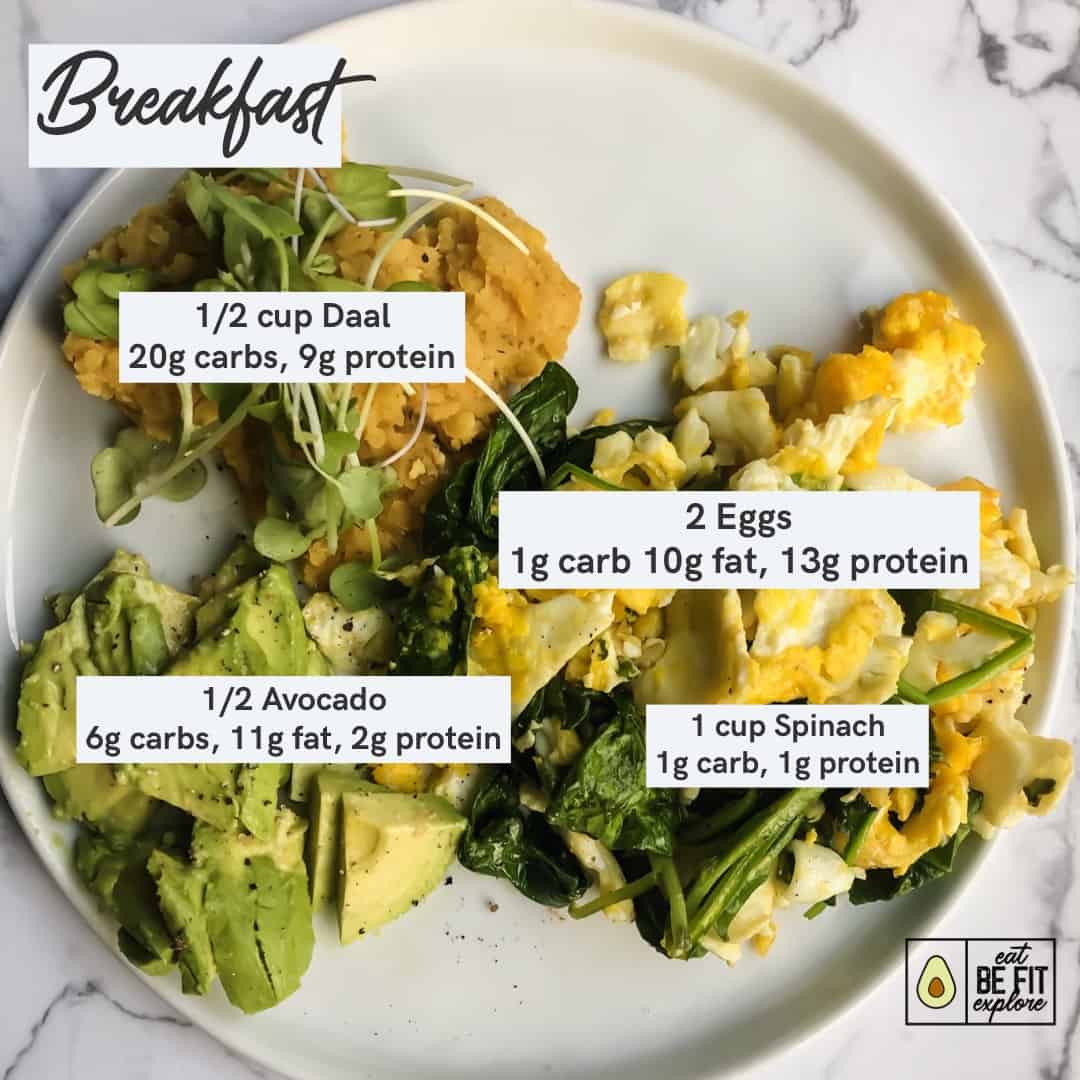
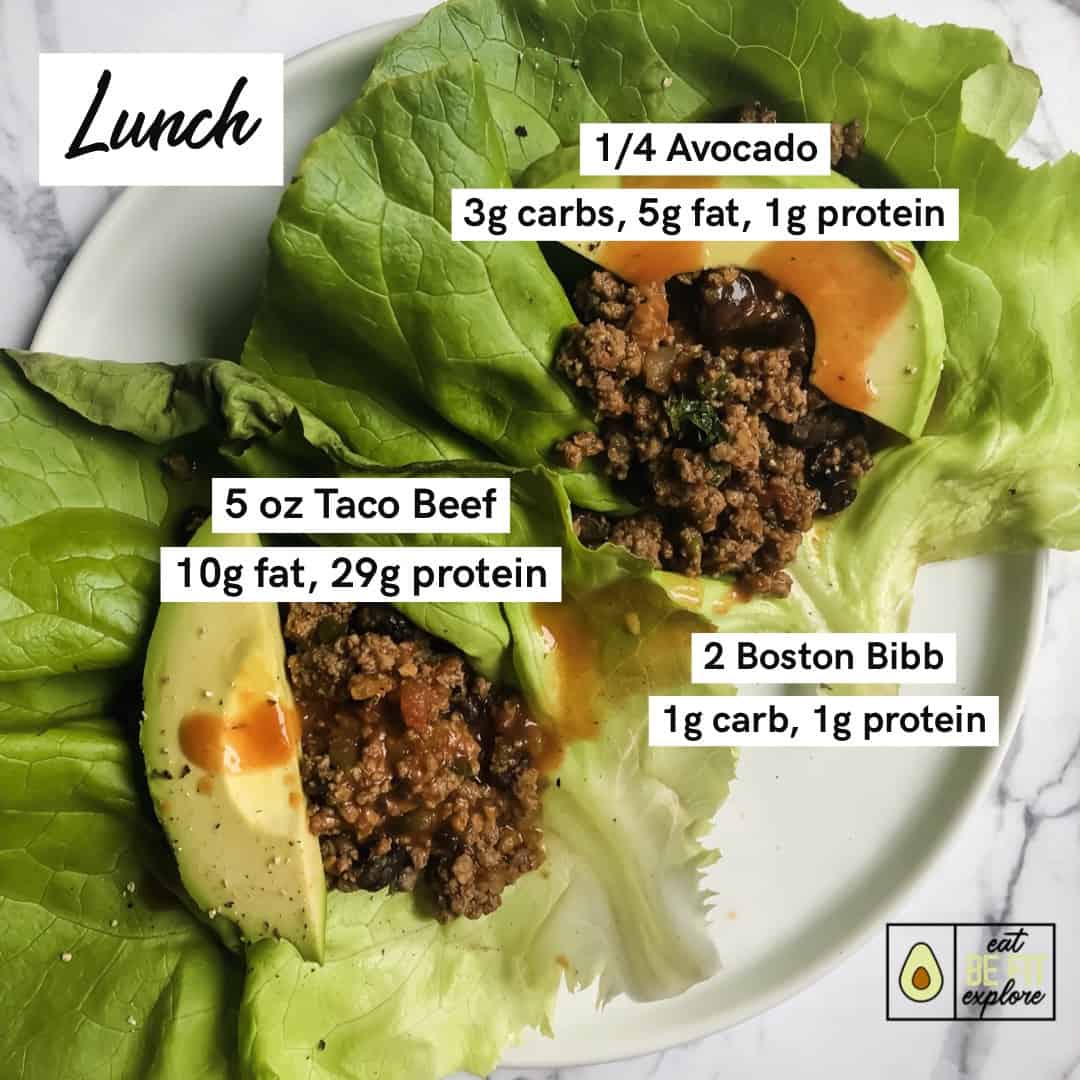

Slow Carb Diet Day of Eating Example 2:
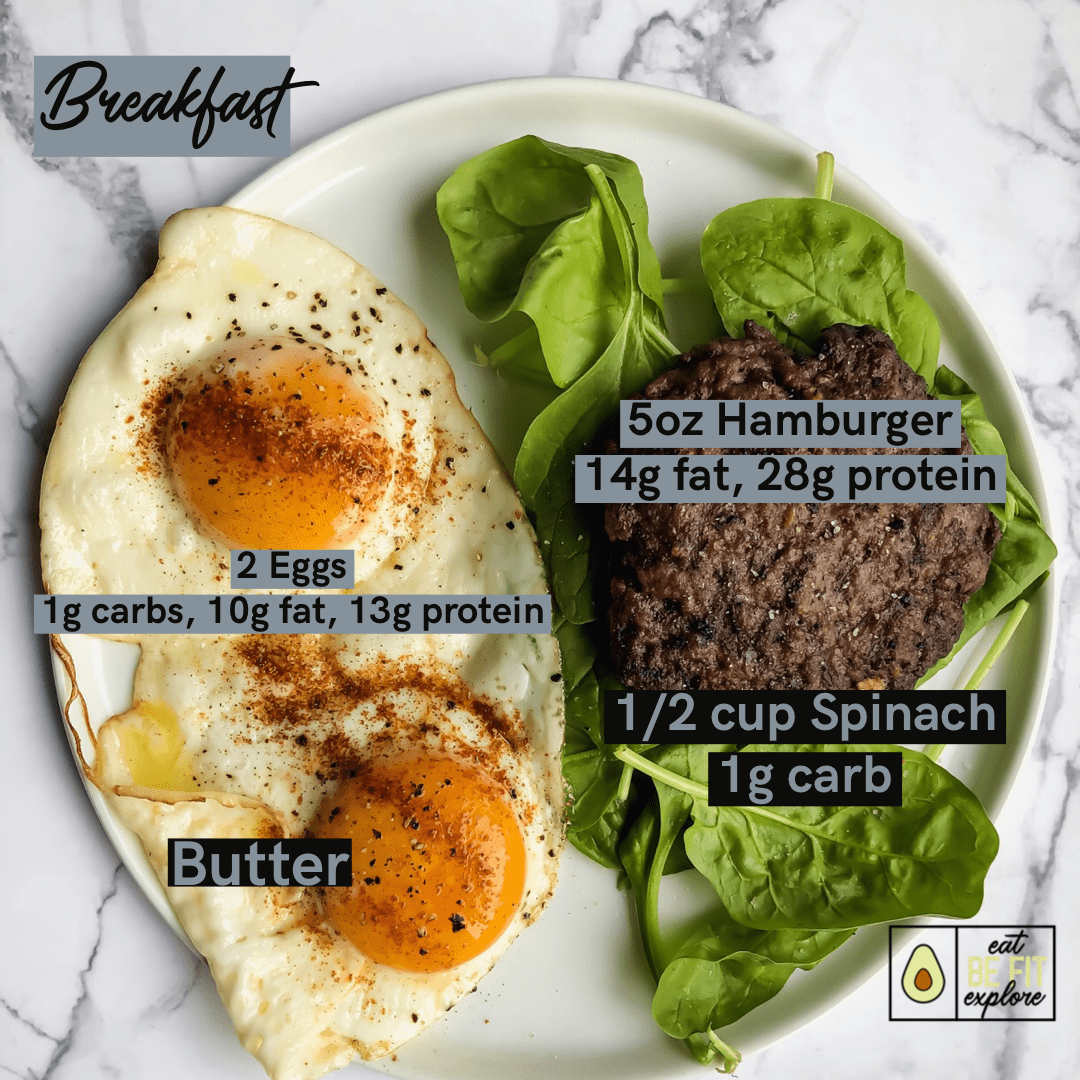
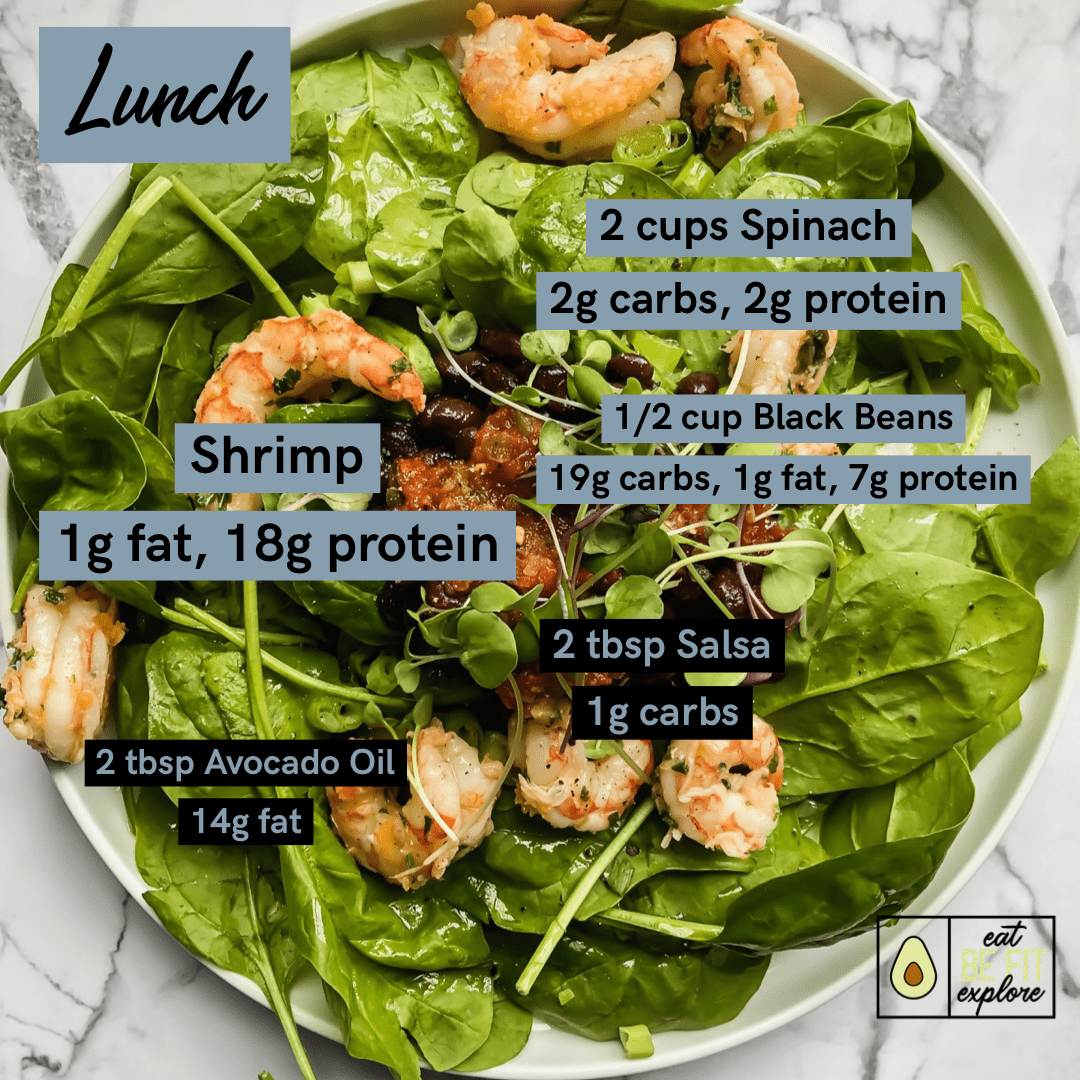
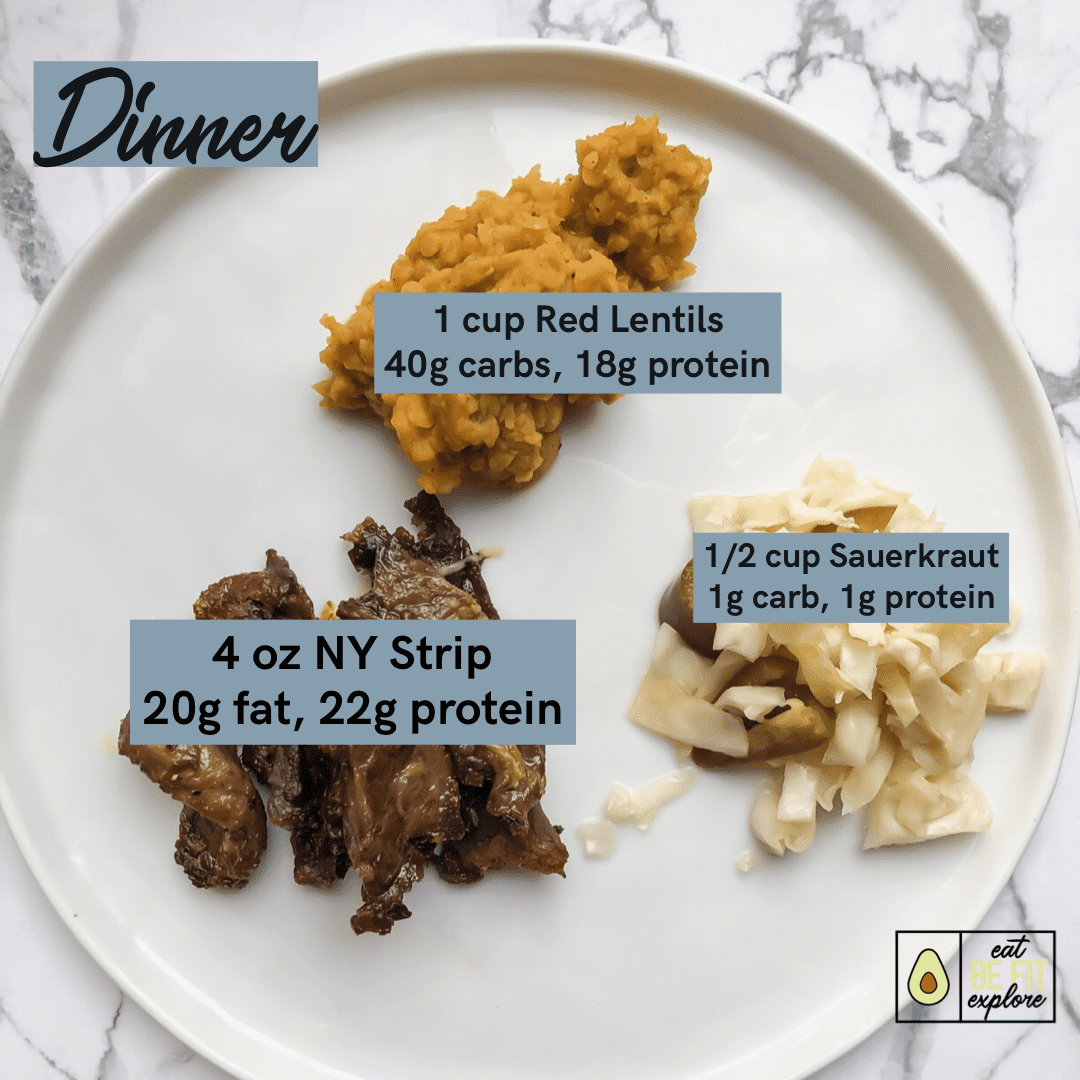
Slow Carb Diet Day of Eating Example 3:
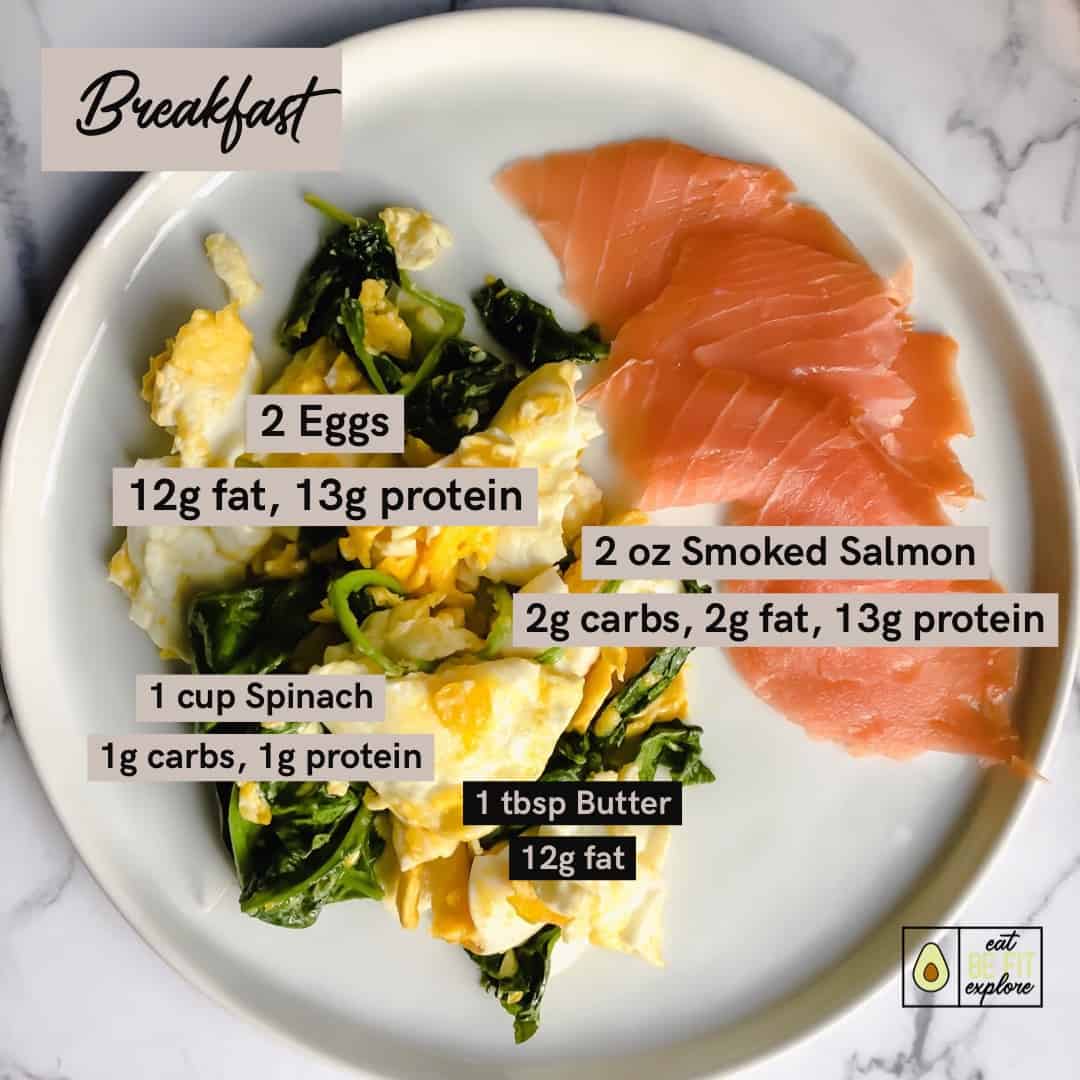
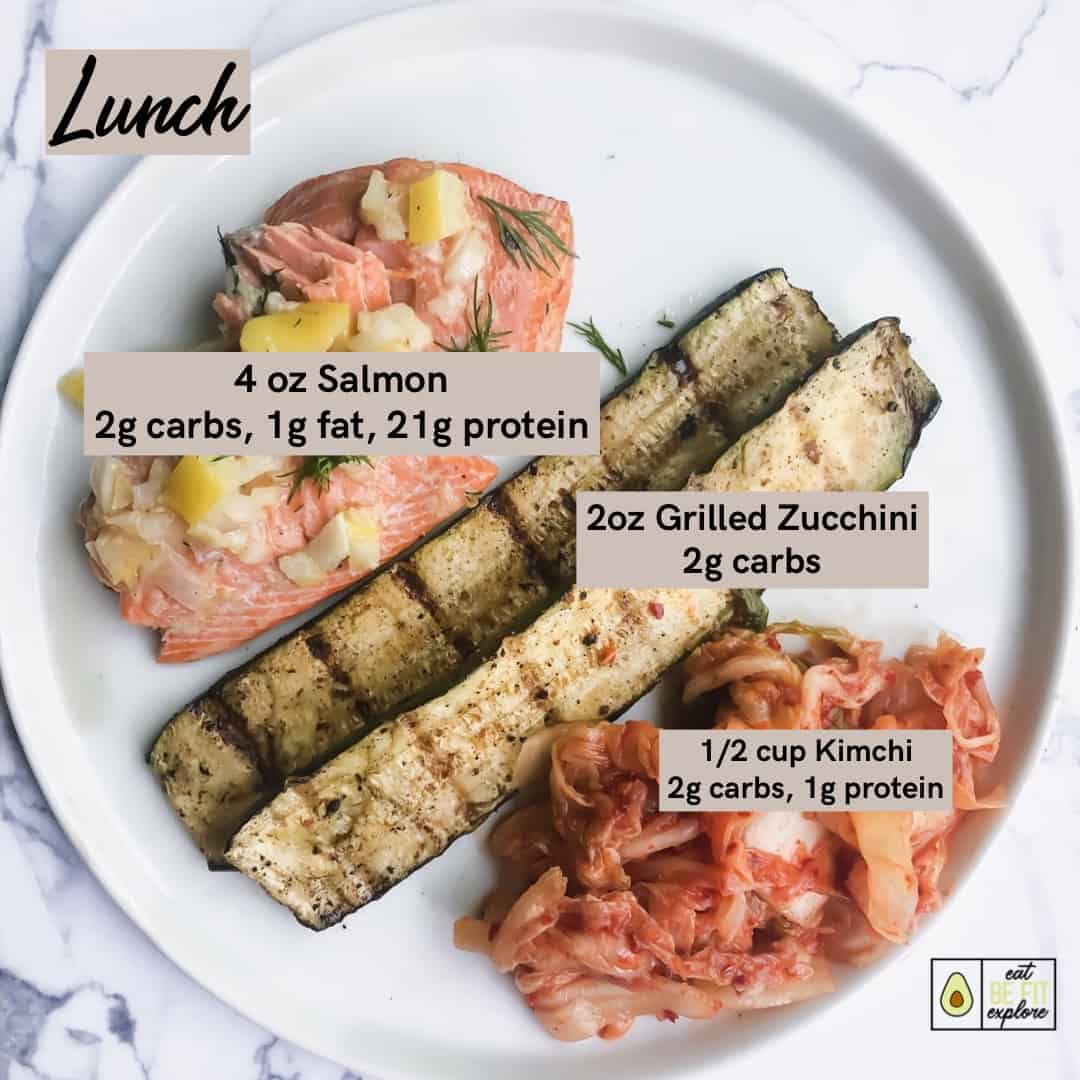
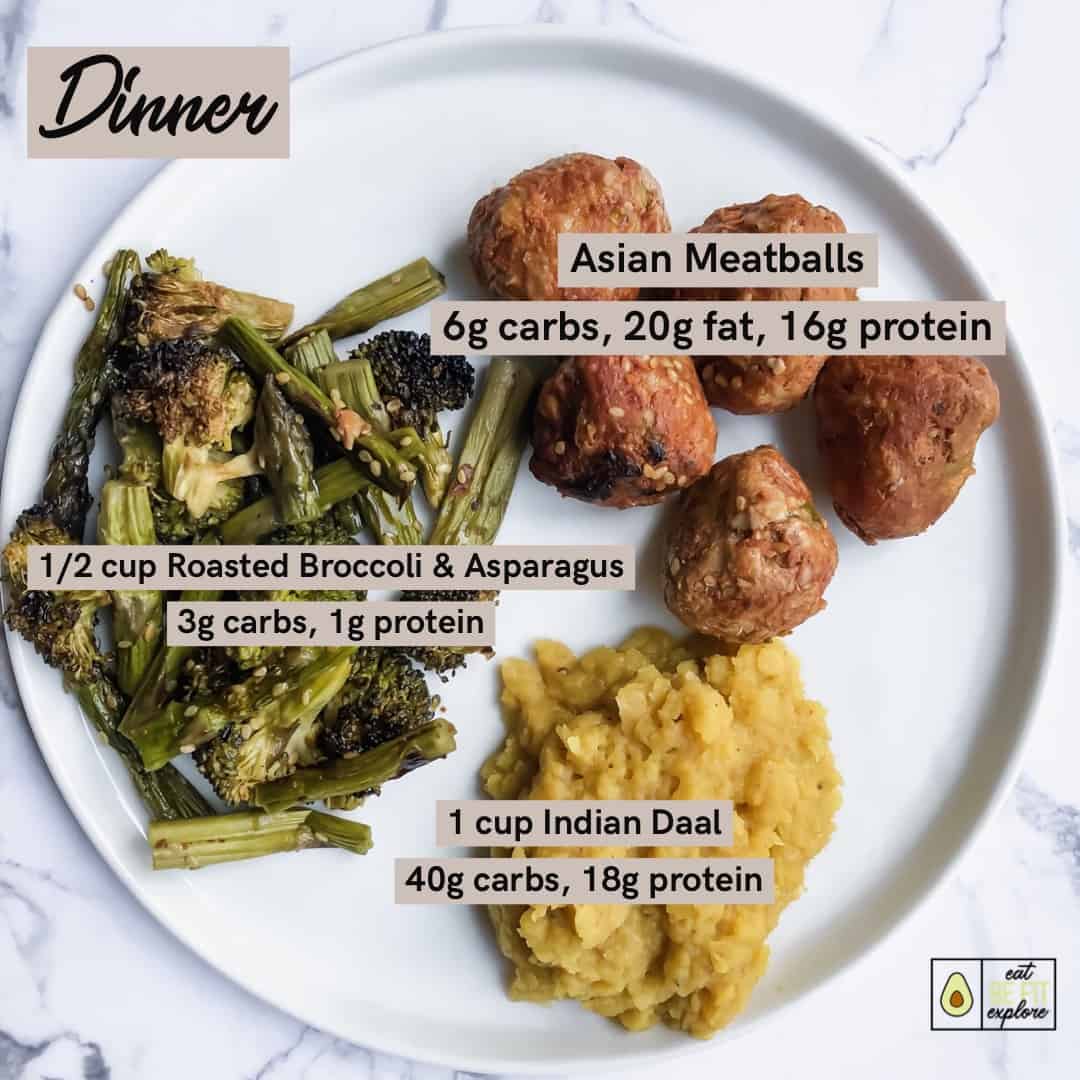
So, What Happened?
In the first few weeks, I lost about 7 lbs. However, after the cheat day, I would gain about 5 lbs. It was all water weight, but it would take a few days for it to come off.
I felt like by the time I lost all of my water weight from my cheat day. It was cheat day again. I will say that having a cheat day each week helped me stay 100% strict with the diet for six days.
Knowing that I was going to have a day where I could eat whatever I wanted and how much I wanted was motivating for me during the week.
With that being said, one cheat DAY a week for me was damaging. I went overboard on my cheat days and felt like crap for the next few days. Also, it’s tough to get back on track on Sundays because I had the “it’s the weekend” mindset. If you are familiar with Keto, you know that right after a cheat day, carb cravings are high, and it was the same principle for the Slow Carb Diet. The day after my cheat day, I wanted more carbs and sugar, and it was a struggle to resist them.
Another interesting thing I learned was that I’m not as intolerant to beans as I thought I was. I’ve had issues digesting beans for as long as I can remember. Ask anyone who knows me. If I have beans, you better run fast because my farts will leave you gasping for an air-no joke. My husband was a little nervous when I told him I was going to start eating beans again.
However, I had NO issues at all eating beans this time, which leads me to believe that it’s not the beans that were the problem; it’s the beans + refined carbs that caused all of my gas and bloating.
Sure, I had an occasional fart every here and there, but before, I would be farting up a storm, and my stomach looked like I was six months pregnant — not this time, though, which was very interesting to me. I did enjoy eating lentils very much, though, and they are delicious!
At the end of the month, I didn’t have any weight loss change. I was pretty much right back where I started. I felt good eating this way, but it didn’t affect my weight or body composition.
What were my takeaways?
I don’t think I did the Slow Carb Diet long enough to assess its efficacy long enough. I think if I followed it for 3 months, I would be able to know if it “works” or not for me.
I would have continued it, but to be honest, I really missed being in Ketosis. Knowing that my body is burning fat as fuel instead of sugar is exhilarating for me, and I am addicted to being in the state of “Nutritional Ketosis.”
I’ve been doing Keto for so long that I feel like my body “craves” to be in Keto. Or maybe it’s more of a mental thing, and I don’t know. It motivates me when I see my Ketones going up and when I feel the signs of being in Ketosis.
Another takeaway I had is that for me to be very motivated and consistent during the week, I need to treat myself occasionally. I think I am going to start incorporating a “treat meal” (not a cheat day) once a week or once every couple of weeks, depending on what I have going on.
It’s very hard to stick to a strict diet. Keto is not hard to follow. However, I follow a Clean Keto Lifestyle, which eliminates a lot of options for me. Looking forward to a treat meal if I am going out to eat with my husband or going to a party will help me mentally stay on track during the week. Check out if Clean Keto Carb Cycling is right for you!
I’ve also developed some hacks of how to minimize the effects of a cheat day which I will write a blog post about soon, and if I follow those hacks, I think I can have one treat meal a week and still jump back into Keto the next day, no problem. (Make sure you subscribe to my email list to get that post sent to you directly)
Another takeaway was that I am going to eat lentils in small quantities on my Ketogenic journey occasionally. Lentils are high in fiber and are very nutritious, and half a cup a day is not going to affect my ketone levels.
If you are interested in learning more about the Slow Carb Diet, you can get Tim Ferris’s book, “The 4-Hour Body,” HERE. It’s a very interesting read, and I encourage you to try the experiment for yourself; it may work really well for you!
Want to try carb cycling for yourself? Download my cheat sheet here.
More articles about Keto Diet:

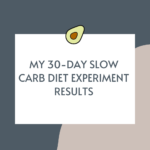

Great meal ideas. Thank you! And you are correct, 1 month is not enough time to see the results. It took me 7 weeks to finally see the needle move and I lost 12 lbs and could see a big difference in pics and videos.
The first 30 days are kinda to help your body adjust to this new way of eating. Then month 2 & 3 the magic happens. But I know months sounds like an eternity when your eating this way!
Thank you for your kind words and for sharing your experience! It’s true, patience can be a challenge, but it sounds like it’s worth the wait for the transformation. Keep up the great work, and thanks again for sharing your progress and checking out my blog!
I love how you mentioned that it’s carbs+beans that make you bloated vs just beans. I was suspecting this as well but now I’m not alone:). I wonder if it’s just not enough enzymes for the body to break down both at the same time. Either way we’re looking post
In my experience with working with women it’s due to lack of digestive enzymes AND being glucose intolerant from long term low carb diets. Your body forgets how to respond to and utilize glucose so when you bring it back, especially more than one source at once you experience symptoms such as gas, bloating and water retention. Thanks for taking the time to read the post and share your feedback Valerie!